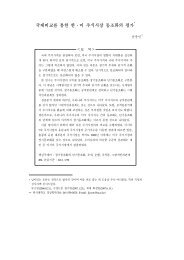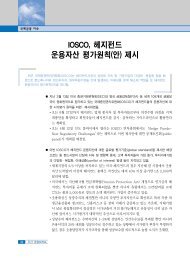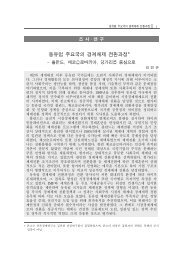Contents
Contents
Contents
- No tags were found...
You also want an ePaper? Increase the reach of your titles
YUMPU automatically turns print PDFs into web optimized ePapers that Google loves.
tional varietals types dominate the Bulgarian wine industry, while domesticvarieties are declining. The most popular red varieties are Merlot and CabernetSauvignon, while the best-selling white wines are Misket, Chardonnay, Dimiatand Muscat. Four local red varieties still enjoy some popularity in the country– Pamid, Gamza, Mavrud and Melnik (or Shiroka Melnishka). The share taken bylocal varieties declined over the review period as a result of decreasing demandand the ageing of vineyards.Bee honey is one of the agricultural products, which is markedly export oriented.In a seriously competitive environment Bulgaria has strong positions in marketsmainly of the EU countries. The EU is the principal trade partner with respect tohoney (approximately 82% of the total export), but some of the countries, forwhich greater quantities of honey are exported, change places. Within Bulgariaa special EU support program (SAPARD), provides for a 50% investment subsidyfor investment projects in agriculture.5.4 Textile and clothing industryTextile and clothing industry is one of the oldest branches of the Bulgarian economy.Bulgaria has a strategic position to source garments to the European market– it is geographically close to West Europe and to fabric producing countriessuch as Turkey or Egypt. Bulgaria has traditionally had availability of quota to theUSA and Canada for a variety of textile, knitting and garment products. Due tothe long traditions in the sector and availability of qualified, cheap labour force,Bulgaria is an established investment destination for many European textile andapparel industry leaders, such as Miroglio and Safil from Italy, Marland Internationalfrom Ireland and Rollmann from Germany. Large productivity gains arepossible by taking advantage of the local skilled labour-force while reinvestingin modern equipment.5.5 TransportationBased on its geographical disposition, transport system, infrastructure, warehouses,customs system, experience and labour force, Bulgaria has a good potentialfor future logistics development.The road infrastructure of Bulgaria comprises of more than 37,000 km roads,about 400 km of which are highways. There are 6,400 km of developed railways,more than 65% of which are electrified. The main Bulgarian sea ports are Bourgasand Varna. The Danube River is the international water road of the country.There are 5 international airports in Bulgaria: Sofia, Varna, Bourgas, Plovdiv andwww.sme.government.bg 17
















